International Journal of Veterinary Science and Research
Study on the bactericidal effect of different organic acids on Escherichia coli and its application in slaughterhouse
Ding Xiao-yan, Bai Yu-hui, Zhao Qi, Wang He-Jia and Xu Shi-Xin*
Cite this as
Xiao-yan D, Yu-hui B, Qi Z, He-Jia W, Shi-Xin X (2021) Study on the bactericidal effect of different organic acids on Escherichia coli and its application in slaughterhousec. Int J Vet Sci Res 7(1): 033-039. DOI: 10.17352/ijvsr.000078The purpose of this experiment is to study the bactericidal effects of organic acids in a short time on Escherichia coli in order to screen the best organic acid disinfectants for slaughterhouse. Lactic acid, malic acid and citric acid that conform to the standards of food additives were selected, and the sterilization effect of different concentrations of organic acids on Escherichia coli was determined by quantitative sterilization test at different times. At same time, the combined (organic acids and plus surfactants) disinfection effect was compared. The test results show that lactic acid has the best bactericidal effect on E. coli, 3% lactic acid can achieve complete bactericidal effect under 0.5min action time; 0.5% lactic acid combined with 50ppm SDS can achieve complete bactericidal under 0.5min action time. Combined with the resultof 540C acceleration test and the result of organic interference test, combined disinfection was applicated in slaughterhouse. The results showed that the disinfectant had good bactericidal effect and reduced cross-contamination. In brief, the organic acids have good bactericidal effect and have a good market application in the future.
Introduction
Microbial contamination is inevitable during the slaughtering and processing of broilers, and cross-contamination among carcass, treated water and equipment can also increase the level of microbial contamination of the carcass. Escherichia coli is a common food-borne pathogen in chicken, and it is also an internationally recognized important indicator of food hygiene. In the broiler slaughtering and processing, drug-resistant strains in broiler carcasses can also be isolated, resulting in cross-contamination in environment and carcass. Drug resistant strains can be passed from generation to generation through resistant genes or resistant plasmids, and even transferred to different strains, which makes the resistance of bacteria extremely complex, and the development of antibiotic resistant bacteria in animals poses a potential risk to humans. Zhao [1] also found that although pre-cooling can reduce bacterial contamination in broiler chickens, the bacterial contamination rate will increase during the subsequent segmentation and conveying process, and the cross-contamination of the segmentation and conveying process is determined to be the key control point, followed by pre-cooling pool water. The same is true of Wang [2], Zeng [3], and Rasschaert [4] on bacterial contamination of broiler slaughtering and processing.
The disinfectant used in the pre-cooling cleaning process in China is sodium hypochlorite [5]. Sodium hypochlorite has the advantages of high efficiency and broad-spectrum, but it is unstable when encountering organic matter, greatly reducing the content of active chlorine, reducing the sterilization ability. However, there is also a certain controversy that the toxicity of the reaction product of sodium hypochlorite and organic matter. Thus the European Union has prohibited the use of sodium hypochlorite in direct contact with food [6], and Islamic countries that export livestock and poultry products to the EU also has prohibited the use of sodium hypochlorite [7]. Therefore, livestock and poultry products which are export to the European Union and Islamic countries, must be sterilized with chlorine-free chemical disinfectants. Organic acids have good bactericidal effect, non-toxic and harmless to the human body, and are not easy to produce drug resistance. They are also approved by the US Food and Drug Administration (FDA) as “Generally Recognized as Safe” (GRAS) foods Additives [8], the US Department of Agriculture regulates 1.5%~2.5% lactic acid, citric acid and acetic acid to treat carcasses. The United States has used peroxyacetic acid in carcass rinsing and pre-cooling tanks [9].
In this paper, three organic acids that meet the national standards of food additives were selected to study the bactericidal effect. At the same time, lactic acid was used in combination with SDS, which is an ingredient allowed for food disinfectants. Response surface analysis was used to optimize the concentration of lactic acid and SDS and processing time. Two kinds of disinfectants were tested for stability, comparing the bactericidal effect under the conditions of 540C acceleration test and interference of organic matter. Finally, the best disinfectant was selected for on-site application in the slaughterhouse.
Materials and methods
Materials
Strains used: Laboratory tests were carried out on twelve strains of Escherichia coli (Figure 1, Table 1). In the experiment of screening disinfectants, single strain(HB6-1) were used.
Disinfectants: The prescreening was applied to DL-malic acid (BR grade, Shanghai Yuanye Biotechnology Co., Ltd.), citric acid (AR grade, Sinopharm Chemical Reagent Co., Ltd.), and DL-lactic acid (AR grade). 10% Sodium Dodecyl Sulfate (SDS) solution was purchased from Beijing Solarbio Technology Co., Ltd..
The coincidence rate of drug resistance phenotype and gene in 12 strains of E. coli was 88%.The drug-resistance of β-lactams predicted by whole genome sequencing analysis was completely consistent with the drug-resistance phenotype(no drug-resistance gene was found in the susceptible strains, while drug-resistance genes were found in all the resistant strains). The coincidence rate of sulfonamides resistance of phenotype and resistance gene was 95%, florfenicol was 95%, aminoglycosides was 90%, polypeptide antibiotic was 90%.The coincidence degree of both quinolones and tetracyclines was less than 90%, the coincidence rate was 75% and 70%, respectively.
Methods
Screening of single organic acids: Different disinfectants were chosen for a prescreening of their effectiveness, which are allowed to use in food according to Chinese national food safety standard (10). In order to screen out the minimum concentration of disinfectant which can achieve the bactericidal efficiency in a short time, 36% citric acid, 32% malic acid and lactic acid were prepared respectively. 36% citric acid; was diluted to 1/2(18%), 5/8(22.5%), 3/4(27%), 7/8(31.5%), 1(36%) citric acid; 32% malic acid was diluted to 1/2(16%), 5/8(20%), 3/4(24%), 7/8(28%), 1(32%); lactic acid was diluted to 4%, 3%, 2%, 1%.
Strains were cultured at 370C on nutrient agar(Oxoid) for 18-24 h. Colony material was passaged in normal saline to a concentration of 8 log CFU mL-1, which was verified by mcreynolds turbidimeter.
Quantitative sterilization test: 0.5ml of bacterial suspension was mixed with 4.5 ml of disinfectant (the control group was replaced by normal saline), which were treated for 0.5 min, 1 min, and 5 min. 50 ul of the mixture was added into 4.95 ml of sterile water to 100 double dilution and neutralization. After that, 100 ul sample solution was inoculated in nutrient agar, and evenly coated with a sterile coater, incubating at 37°C for 18-24 h. The number of colonies was counted and the sterilization rate was calculated. The prepared bacterial suspension was diluted 104 times and then plated as a positive control.
Screening of compound organic acids: According to the screening results of single acid, it was found that lactic acid had the best bactericidal effect. Therefore, the combination of lactic acid (0.1-2%) and SDS (10-500 ppm) was chosen. The method was same as above.
Response surface analysis method: To optimize the lactic acid concentration, SDS concentration and time control conditions, which limited the maximum and minimum values for three single factors, the three-level code was determined and used (Table 2). Using Design Expert 11 software, Box-Behnken response surface analysis was used to optimize treatment conditions on three factors, including lactic acid concentration, time, and SDS concentration, as independent variables and bactericidal rate response values to obtain the maximum bactericidal rate. According to Table 3, 17 combination conditions were automatically generated by Design Expert11 software, of which 5 groups were repeated tests at the center point (Table 4), and 17 independent tests are carried out according to this table.
Verification of optimal conditions: In order to judge the feasibility of the plan, 12 strains of Escherichia coli with different drug resistance phenotype isolated from each process in a slaughterhouse in Hebei were randomly selected. The bacterial suspension of 12 strains of Escherichia coli was diluted 104 times and then plated as a positive control. The experimental method was same as quantitative sterilization test.
Stability test
54°C acceleration test: The single and compound disinfectants were stored in a 54°C thermotank for 0 d, 7 d, and 14 d to conduct a quantitative sterilization test.
Organic matter interference test: In order to simulate the organic matter existed in the slaughterhouse, 10%, 15%, and 20% fetal bovine serum were added to the disinfectants to determine the killing effect.
Application in slaughterhouse
In order to verify the bactericidal effect of the compound disinfectant in slaughterhouse, the experiment was carried out in two slaughterhouse workshops in Hebei and Anhui. According to previous investigations on the key points of contamination of food-borne pathogens in the slaughter process of broilers, splitting and packaging were identified as the key point of contamination. And two workers were selected for carcass segmentation. The operation of the experimental group was as follows: 30 whole chicken carcasses after pre-cooling were randomly selected. For each division, a whole chicken carcass, the gloves and knives used by the workers were disinfected. After soaking for 1 minute, the surfaces of gloves and cutting tools were directly scraped with a sterile cotton swab, and 30 samples were taken from the surface of gloves and knives. Workers use the gloves and knives disinfected with compound disinfectant to cut the whole chicken carcass, and 30 samples were taken from the surface of the chicken. 30 whole chicken carcasses on the pre-cooling line were taken randomly as the control group. The control group was not dealt with disinfectant. Other operation was same as above. After sampling, the swabs were placed immediately in the transport medium and transported to the laboratory in an ice box for testing.
Isolation and purification of Escherichia coli: The sample was purified and passaged 2 times by MacConkey. A single red colony was picked and inoculated on nutrient agar. The purified strains were identified by PCR. The method to extract DNA is as follows. A single colony was picked and inoculated into TSB broth. After cultivating for 12-16 h at 37 °C at 180 rpm, the bacterial solution was centrifuged at 10,000 rpm for 1 min. 500 ul of RNase-free Water was added to dissolve sediment with shaking and boiling for 15 min. The bacterial solution was centrifuged at 12,000 rpm for 3 min. The total PCR reaction system was 20 ul, 2×Taq Master mix 10 ul, the upstream and downstream primers (phoA, synthesized by Beijing Biomedicine Technology Co., Ltd.) each 0.5 ul (concentration of 10 umol/L), ddH2O 8.5 ul, DNA template 0.5ul; PCR reaction conditions: pre-denaturation at 94°C for 5 min, denaturation at 94°C for 20s, annealing at 58°C for 20s, extension at 72°C for 40s, a total of 30 cycles, and the final extension at 72°C for 6 min. After the reaction, 8 ul reaction product was electrophoresis by 1.2% agarose gel, and the results were observed by gel imaging system. The number of positive PCR results was counted.
Results and analysis
Screening formulation of monoacid: The results of the quantitative bactericidal tests showed that the lowest concentration of organic acids needed to achieve high bactericidal effect in a short time was lactic acid (3%), followed by malic acid (25.5%) and citric acid (36%)Figures 2-4.
Experimental design and results
According to the preliminary screening results, the concentration of SDS was 10, 50 and 100 ppm, the concentration of lactic acid was 0.1%, 0.5% and 1%, and the time was 0.5min, 1min and 5min. Lactic acid concentration (A), time (B) and SDS concentration (C) were taken as independent variables, and bactericidal rate (Y) was taken as response value. The response surface analysis scheme and test results were shown in Table 4.
Model establishment and significance test
Response surface analysis was used to regression fit the bactericidal effect of the compound preparation, and the standard regression equation of bactericidal rate was obtained. The F test was used to conduct variance analysis on the test data to evaluate the statistical significance of the model.
Regression equation: Bacteriostasis=98.90+2.00A+0.3950B+2.26C-3.87AC.
Variance analysis was conducted on this model, and the results were shown in Table 5. The significance test of model coefficients was shown in Table 6. Table 5 shows that the P value of overall model is 0.05, indicating a significant difference at different levels of the model equation. Table 6 shows that the first term C(P<0.05) and the interaction item AC(P<0.05) were statistically significant; the first term A (0.05 It can be seen from Figure 4 that the concentration of lactic acid and the concentration of SDS are the factors that have the greatest influence on the bactericide rate, with the most obvious interaction. With the increase of the concentration of lactic acid and SDS, the bactericide rate increased gradually. Based on the results and regression equations, the Design Expert11 software was used to obtain the optimal test combination for each factor (0.5% lactic acid concentration, 1min treatment time, 50 ppm SDS concentration), and obtained a predicted response value of 100% inhibition. 12 strains of Escherichia coli with different drug resistance spectra were sterilized by the optimal combination of 0.5% lactic acid concentration, 50 ppm SDS concentration and 1min treatment time. Results of the bactericide rate of 12 strains was 100%, which was completely consistent with the predicted value (100%) Table 7. 54°C acceleration test. The results shows that the two disinfectant have no effect on their bactericidal capacity when stored at 54 0C for 0 d, 7 d and 14 d (Tables 8,9). According to the evaluation criteria of stability test in the disinfection technical specification (2002 edition), the effective period of bactericidal or bacteriostasis of the two disinfectants in this test can be kept at room temperature for at least 1 year. Organic matter interference test. For 3% lactate monoacid, adding 5% fetal bovine serum had a weak effect on the bactericide rate, 10% and 15% fetal bovine serum had no interference effect after treatment for 5min, and 20% had no interference effect after treatment for 10min. For the compound preparation of 0.5% lactic acid and 50% ppm SDS, 5% and 10% fetal bovine serum had no interference effect; 15% and 20% had effect, but the bactericide rate was still above 90% Table 10. The compound of 0.5% lactic acid and 50 ppm SDS was used for disinfection. E. coli isolated from gloves, knives and chicken surfaces before and after disinfection were shown in Figures 5,6. The number of E. coli isolated from gloves and knives were significantly reduced after disinfection. The number of E. coli on chicken surfaces from Anhui slaughterhouse decreased significantly after disinfection. The disinfectant did not reduce E. coli on the chicken surface at the Hebei slaughterhouse, but neither cause cross-contamination Figure 7. Domestic and foreign scholars have done relevant research on the reduction of bacteria on the surface of animal carcasses in the slaughter production chain. Gill [12] used 4% lactic acid to treat the surface of frozen beef carcasses in two slaughterhouses, and found that 4% lactic acid had a good reduction effect on the coliforms on the surface of beef carcasses. Dean [13] used 4% lactic acid to spray the carcasses of broilers and turkeys during processing. The results showed that 4% lactic acid could effectively reduce the microorganisms on the carcass surface. Dubal [14] treated frozen lamb with mono-lactic acid and compound organic acids (Acetic acid and propionic acid), and it was found that both could effectively reduce Staphylococcus aureus, Listeria monocytogenes, Escherichia coli and Salmonella. Qiao [15] studied the bactericidal effects of different concentrations of lactic acid on three food-borne pathogens and found that 0.9 mg/mL lactic acid had almost no inhibitory effect on Bacillus cereus, 0.45 mg/mL lactic acid had had little inhibitory effect on Staphylococcus aureus and Escherichia coli., and 0.225 mg/mL lactic acid completely lost the inhibitory effect on Bacillus cereus, Staphylococcus aureus and Escherichia coli. At present, the research on disinfectants has hardly put forward the effect on drug-resistant strains. This experiment is to screen organic acids for drug-resistant strains. Both of the two formulations of disinfectants have a good killing effect on drug-resistant strains, and can also kill non-drug-resistant strains. In order to reduce the contamination rate and carrying amount of drug-resistant bacteria in the slaughter production chain, three organic acids (lactic acid, malic acid and citric acid) that meet the “GB 2760-2014 National Food Safety Standard Food Additive Use Standard” and belong to natural arganic acid with safety guarantee were screened. SDS is the raw materials allowed to be used for food disinfectants, which can be directly used to disinfect food, catering utensils, tools, equipment or food packaging materials and containers that directly contact with food. The residue and maximum concentration of SDS in food disinfectants are not specified. E. coli with multiple drug-resistance (the drug resistance spectrum is β-lactams-aminoglycosides-tetracyclines-chloramphenicol-sulfonamides) from precooling water were also selected as target microorganism. And it was found that lactic acid in bactericidal effect was best, and 3% lactic acid can realize the role of disinfection within 30s.As a well-recognized process optimization method, response surface analysis is usually applied to the extraction and fermentation of organic matter. Wen [16] optimized the antibacterial method from the four levels of lactic acid concentration, chitosan concentration, rotation speed, and washing time through Box-Behnken experimental design, and achieved a reduction of 2.2-4.3lg CFU/g of Vibrio parahaemolyticus in shrimp. And it didn’t change the quality of shrimp smell. In this study, response surface analysis was used to obtain the optimal combination of lactic acid and SDS for different time, and it was found that the inhibitory rate of Escherichia coli was stable at 100% after being treated with 0.5% lactic acid and 50 ppm SDS for 1min. Physical and chemical methods are usually used to reduce the microbial contamination rate and carry amount of chicken in broiler slaughterhouse. The physical disinfection methods include mainly ultraviolet irradiation and high-temperature scalding. Usually, when a day’s work is completed, the workshop is sterilized by ultraviolet irradiation. 58-620C high-temperature water was used to scald the hair in the scalding pool, and some heat-labile microorganisms die due to high temperature. Chemical methods mainly cover chemical disinfectants, and disinfectants are usually added to the pre-cooling pool to reduce bacteria. The change of bacterial contamination rate caused by cross-contamination is an important parameter in the risk assessment model of broiler slaughterhouse [17]. Bacteria remaining in the pre-cooled washing water can migrate to the surface of the uncontaminated chicken, causing cross-contamination. In the process of dividing and conveying, the carcass repeatedly passes through pollution sources such as processing equipment, cutting boards, and workers’ hands. If the disinfection is not thorough enough, the number of bacteria on the surface of the carcass will increase, which will lead to cross-contamination of the product before packaging. The single and compound formulas of organic acids selected in this test can achieve high-efficiency bactericidal effects in a short period of time, and are less affected by organic matter interference. Therefore, the application of sodium hypochlorite in slaughterhouses can be considered in the future. Therefore, it can be considered to replace sodium hypochlorite in slaughterhouse application in the future. Using quantitative bactericidal test, the best effect of 3% lactic acid on multi-drug resistant Escherichia coli was screened. Response surface methodology was used to optimize the three conditions of lactic acid, SDS and time. After mixing with the normal strain (which had no resistance to the 14 detected antimicrobial agents) for 1min, zero bacteria remained. The strains with different drug resistance were treated for 1min without any residual bacteria. This indicates that the treatment mode of this formulation can completely and efficiently kill both normal and drug-resistant strains, providing a solution to the concern that drug-resistant genes of drug-resistant strains enter the human body through the food chain. Through 540C accelerated test and organic interference test, it was found that the two formulations had good stability, indicating that the bactericidal or bacteriostasis validity of the two disinfectants was kept at room temperature for at least 1 year. The compound disinfectant is little affected by the interference of organic matter, 10% of organic matter will not affect its effect at all, but the high concentration of organic matter will affect the bactericidal power of lactic acid, and the low concentration of organic matter has little influence on it. The combination of 0.5% lactic acid and 50 ppm SDS applied in the slaughterhouse could reduce the E. coli on the knives and gloves, and the bactericidal rate reached 77%, which was not the same as the experimental results of organic matter interference, which may be related to the E. coli carrying rate in the chicken carcass. In a nutshell, the effect of organic acid disinfectants is similar to that of traditional disinfection methods, but organic acids are safer and less affected by organic matter. So they will have a very wide application prospect in slaughterhouses in the future.Response surface analysis and parameter optimization
Verification of optimal conditions
Results of stability test
Results of application in slaughterhouse
Discussion
Conclusion
We thank China institute of Veterinary Drug Control, Beijing, China, for technical support. The project was supported by funds of the National Key Research and Development Program of China (grant 2018YFD0500506-1).
- Zhao G, Liu N, Zhao JM (2018) Quantitative Risk Assessment on Salmonella Contamination during Slaughtering and Processing of Broiler Chickens. China Animal Health Inspection 35: 26-31.
- Wang L, Zhao G, Zhao JM (2020) Study on the quantitative assessment of Staphylococcus aureus in the broiler chicken slaughtering line. Chinese Journal of Food Hygiene 32: 300-306.
- Zeng H, De Reu K, Gabriël S, Mattheus W, De Zutter L, et al. (2021) Salmonella prevalence and persistence in industrialized poultry slaughterhouses. Poult Sci 100: 100991. Link: https://bit.ly/3wM3rOu
- Rasschaert G, Houf K, Godard C, Wildemauwe C, Pastuszczak-Frak M, et al. (2008) Contamination of carcasses with Salmonella during poultry slaughter. J Food Prot 71: 146-152. Link: https://bit.ly/3uEZoSG
- Ministry of Agriculture and Rural Affairs of the People’s Republic of China (2006) Broiler slaughter quality management practices:NY/T 1174-2006. Beijing: Standards Press of China, 2006. Link: https://bit.ly/3i9dxoC
- European Food Safety Authority (EFSA) (2011) Parma, Italy. Scientific Opinion on Campylobacter in broiler meat production: control options and performance objectives and/or targets at different stages of the food chain. EFSA Journal 9: 2105. Link: https://bit.ly/3p42Sgq
- Dong SS, Wang KL, Huang XQ, Yuan H, Guo H, et al. (2017) Research status of pre-cooling and reducing technology in the process of broilers slaughtering. Meat Industry 40-47. Link: https://bit.ly/3fB2Cm5
- Fan X, Sokorai KJ (2015) Formation of trichloromethane in chlorinated water and fresh-cut produce and as a result of reacting with citric acid.Postharvest Biology and Technology 109: 65-72. Link: https://bit.ly/3i21QQJ
- Smulders FJM, Greer GG (1998) Integrating microbial decontamination with organic acids in HACCP programmes for muscle foods: prospects and controversies. Int J Food Microbiol 44: 149-169. Link: https://bit.ly/3c39F4U
- National Health and Family Planning Commission of the People's Republic of China (2014) National standards for food safety: GB 2760-2014 Standard for the use of food additives. Beijing: Standards Press of China.
- Wang HJ (2019) Drug Resistance Patterns and ESBLs Gene Analysis in Escherichia coli Isolated from Livestock in Chongqing Area[D]. China Agricultural University.
- Gill CO, Badoni M (2004) Effects of peroxyacetic acid,acidified sodium chlorite or lactic acid solutions on the microflora of chilled beef carcasses. Int J Food Microbiol 91: 43-50. Link: https://bit.ly/3fVquQc
- Burfoot D, Mulvey E (2011) Reducing microbial counts on chicken and turkey carcasses using lactic acid. Food Control 1729-1735. Link: https://bit.ly/2SGpck7
- Dubal ZB, Paturkar AM, Waskar VS, Zende RJ, Latha C, et al. (2004) Effect of food grade organic acids on inoculated S.aureus,L monocytogenes,E.coli and S.Typhimurium in sheep/goat meat stored at refrigeration temperature. Meat Science 66: 817-821. Link: https://bit.ly/3uDq9Hl
- Qiao ZH, Cheng YQ, LU ZH (2008) Antibacterial and bactericide activity of lactic acid against three strains of food-borne pathogenic bacteria. Food Science and Technology 187-191.
- Wang W, Li M, Fang W, Pradhan AK, Li Y, et al. (2013) A predictive model for assessment of decontamination effects of lactic acid and chitosan used in combination on Vibrio paraharmolyticus in shrimps. Int J Food Microbiol 167: 124-130. Link: https://bit.ly/2Tkm5i3
- Xiao XN, Wang W, Zhang QY, Zhang JM, Liao M, et al. (2019) Effect of Sodium Hypochlorite on Preventing Cross-contamination of Salmonella on Broiler in Chilling Processes at Slaughter House. Science and Technology of Food Industry 40: 206-217. Link: https://bit.ly/3vESH4i
Article Alerts
Subscribe to our articles alerts and stay tuned.
 This work is licensed under a Creative Commons Attribution 4.0 International License.
This work is licensed under a Creative Commons Attribution 4.0 International License.
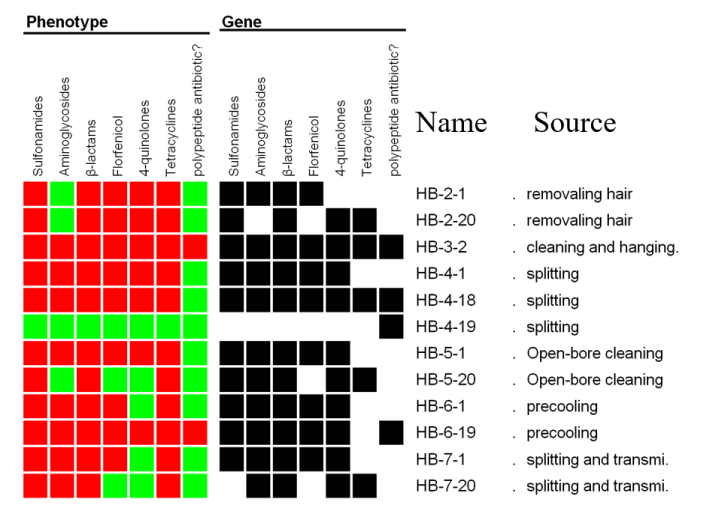
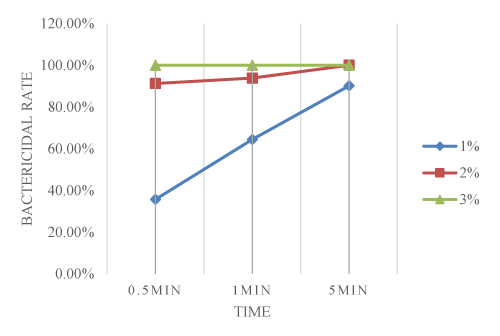
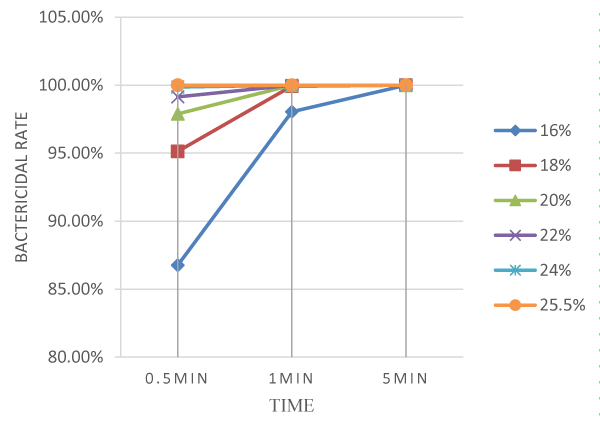
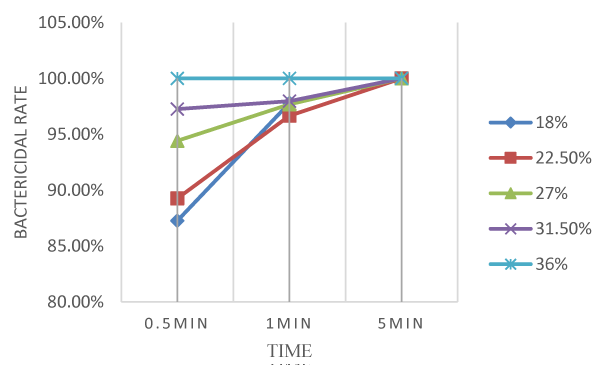

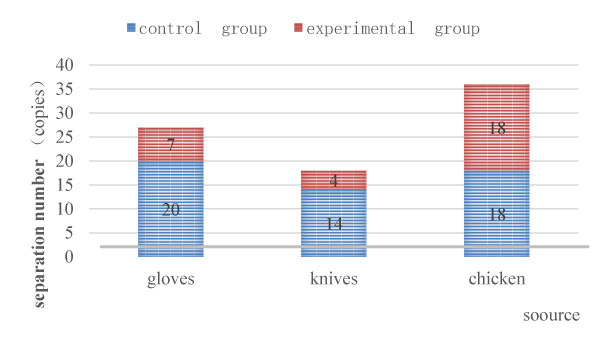
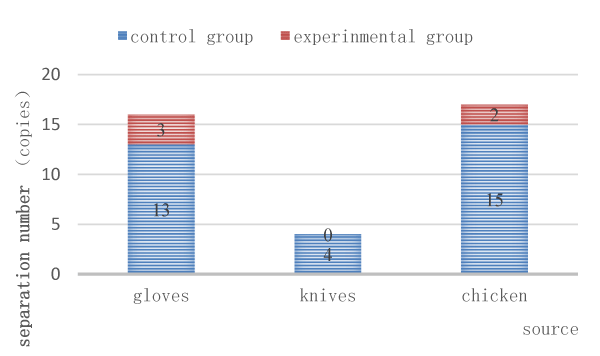

 Save to Mendeley
Save to Mendeley
